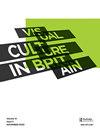Pat Douthwaite的多重选择
Q2 Arts and Humanities
引用次数: 0
摘要
苏格兰画家Pat Douthwaite(1934–2002)经常被认为是一位“麻烦缠身”的艺术家,以其黑暗和噩梦般的场景而闻名。然而,她独特的风格在战后的苏格兰绘画中仍然是无与伦比的。本文以杜思韦特在20世纪60年代至80年代初的女性绘画为中心,通过她的隐蔽自画像创作,探讨了她对自我和女性身份建构的审视。本文章由计算机程序翻译,如有差异,请以英文原文为准。
The Multiple Selves of Pat Douthwaite
The Scottish painter Pat Douthwaite (1934–2002) has often been dismissed as a ‘troubled’ artist, known for her dark and nightmarish scenes. Her unique style, however, remains unparalleled in Scottish post-war painting. Focusing on her paintings of women from the 1960s to early 1980s, this article explores Douthwaite’s examination of the self and the construction of womanhood through her production of covert self-portraits.
求助全文
通过发布文献求助,成功后即可免费获取论文全文。
去求助
来源期刊

Visual Culture in Britain
Arts and Humanities-Visual Arts and Performing Arts
CiteScore
0.60
自引率
0.00%
发文量
1
 求助内容:
求助内容: 应助结果提醒方式:
应助结果提醒方式:


